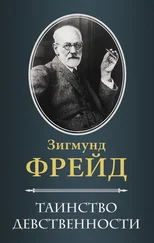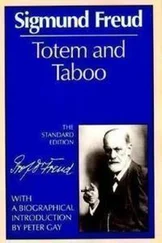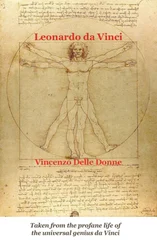The explanation comes from the infantile sexual theories. There really was a time in which the male genital was found to be compatible with the representation of the mother. When the male child first directs his curiosity to the riddle of the sexual life, he is dominated by the interest for his own genitals. He finds this part of the body too valuable and too important to believe that it would be missing in other persons to whom he feels such a resemblance. As he cannot divine that there is still another equally valuable type of genital formation he must grasp the assumption that all persons, also women, possess such a member as he. This preconception is so firm in the youthful investigator that it is not destroyed even by the first observation of the genitals in little girls. His perception naturally tells him that there is something different here than in him, but he is unable to admit to himself as the content of this perception that he cannot find this member in girls. That this member may be missing is to him a dismal and unbearable thought, and he therefore seeks to reconcile it by deciding that it also exists in girls but it is still very small and that it will grow later. [37] Cf. the observations in the Jahrbuch für Psychoanalytische und Psychopathologische Forschungen, Vol. I, 1909.
If this expectation does not appear to be fulfilled on later observation he has at his disposal another way of escape. The member also existed in the little girl but it was cut off and on its place there remained a wound. This progress of the theory already makes use of his own painful experience; he was threatened in the meantime that this important organ will be taken away from him if it will form too much of an interest for his occupation. Under the influence of this threat of castration he now interprets his conception of the female genital, henceforth he will tremble for his masculinity, but at the same time he will look with contempt upon those unhappy creatures upon whom, in his opinion, this cruel punishment had already been visited.
Before the child came under the domination of the castration complex, at the time when he still held the woman at her full value, he began to manifest an intensive desire to look as an erotic activity of his impulse. He wished to see the genitals of other persons, originally probably because he wished to compare them with his own. The erotic attraction which emanated from the person of his mother soon reached its height in the longing to see her genital which he believed to be a penis. With the cognition acquired only later that the woman has no penis, this longing often becomes transformed into its opposite and gives place to disgust, which in the years of puberty may become the cause of psychic impotence, of misogyny and of lasting homosexuality. But the fixation on the once so vividly desired object, the penis of the woman, leaves ineradicable traces in the psychic life of the child, which has gone through that fragment of infantile sexual investigation with particular thoroughness. The fetich–like reverence for the feminine foot and shoe seems to take the foot only as a substitutive symbol for the once revered and since then missed member of the woman. The "braid–slashers" without knowing it play the part of persons who perform the act of castration on the female genital.
One will not gain any correct understanding of the activities of the infantile sexuality and probably will consider these communications unworthy of belief, as long as one does not relinquish the attitude of our cultural depreciation of the genitals and of the sexual functions in general. To understand the infantile psychic life one has to look to analogies from primitive times. For a long series of generations we have been in the habit of considering the genitals or pudenda as objects of shame, and in the case of more successful sexual repression as objects of disgust. The majority of those living to–day only reluctantly obey the laws of propagation, feeling thereby that their human dignity is being offended and degraded. What exists among us of the other conception of the sexual life is found only in the uncultivated and in the lower social strata; among the higher and more refined types it is concealed as culturally inferior, and its activity is ventured only under the embittered admonition of a guilty conscience. It was quite different in the primitive times of the human race. From the laborious collections of students of civilization one gains the conviction that the genitals were originally the pride and hope of living beings, they enjoyed divine worship, and the divine nature of their functions was transported to all newly acquired activities of mankind. Through sublimation of its essential elements there arose innumerable god–figures, and at the time when the relation of official religions with sexual activity was already hidden from the general consciousness, secret cults labored to preserve it alive among a number of the initiated. In the course of cultural development it finally happened that so much godliness and holiness had been extracted from sexuality that the exhausted remnant fell into contempt. But considering the indestructibility which is in the nature of all psychic impressions one need not wonder that even the most primitive forms of genital worship could be demonstrated until quite recent times, and that language, customs and superstitions of present day humanity contain the remnants of all phases of this course of development. [38] Cf. Richard Payne Knight: The Cult of Priapus.
Important biological analogies have taught us that the psychic development of the individual is a short repetition of the course of development of the race, and we shall therefore not find improbable what the psychoanalytic investigation of the child's psyche asserts concerning the infantile estimation of the genitals. The infantile assumption of the maternal penis is thus the common source of origin for the androgynous formation of the maternal deities like the Egyptian goddess Mut and the vulture's "coda" (tail) in Leonardo's childhood phantasy. As a matter of fact, it is only through misunderstanding that these deistic representations are designated hermaphroditic in the medical sense of the word. In none of them is there a union of the true genitals of both sexes as they are united in some deformed beings to the disgust of every human eye; but besides the breast as a mark of motherhood there is also the male member, just as it existed in the first imagination of the child about his mother's body. Mythology has retained for the faithful this revered and very early fancied bodily formation of the mother. The prominence given to the vulture–tail in Leonardo's phantasy we can now translate as follows: At that time when I directed my tender curiosity to my mother I still adjudged to her a genital like my own. A further testimonial of Leonardo's precocious sexual investigation, which in our opinion became decisive for his entire life.
A brief reflection now admonishes us that we should not be satisfied with the explanation of the vulture–tail in Leonardo's childhood phantasy. It seems as if it contained more than we as yet understand. For its more striking feature really consisted in the fact that the nursing at the mother's breast was transformed into being nursed, that is into a passive act which thus gives the situation an undoubted homosexual character. Mindful of the historical probability that Leonardo behaved in life as a homosexual in feeling, the question obtrudes itself whether this phantasy does not point to a causal connection between Leonardo's childhood relations to his mother and the later manifest, if only ideal, homosexuality. We would not venture to draw such conclusion from Leonardo's disfigured reminiscence were it not for the fact that we know from our psychoanalytic investigation of homosexual patients that such a relation exists, indeed it really is an intimate and necessary relation.
Читать дальше









